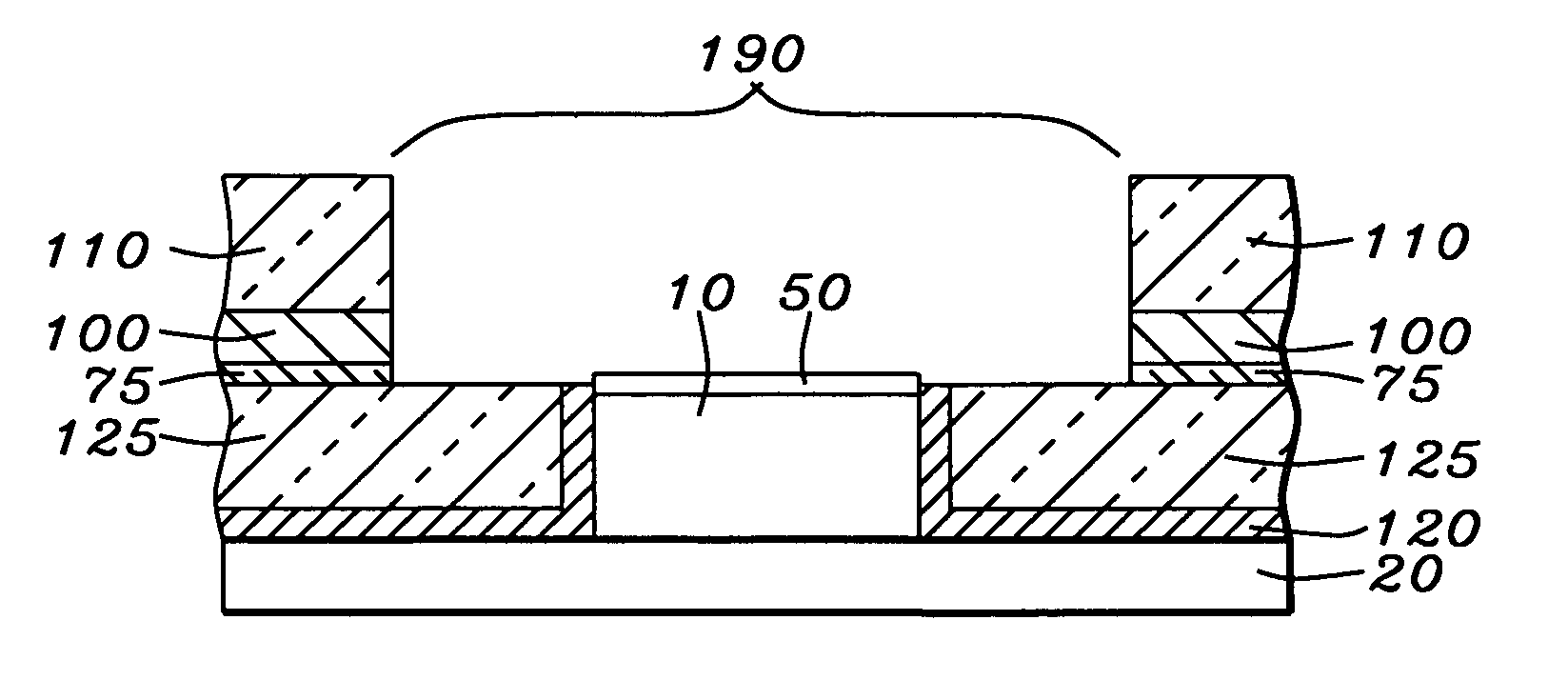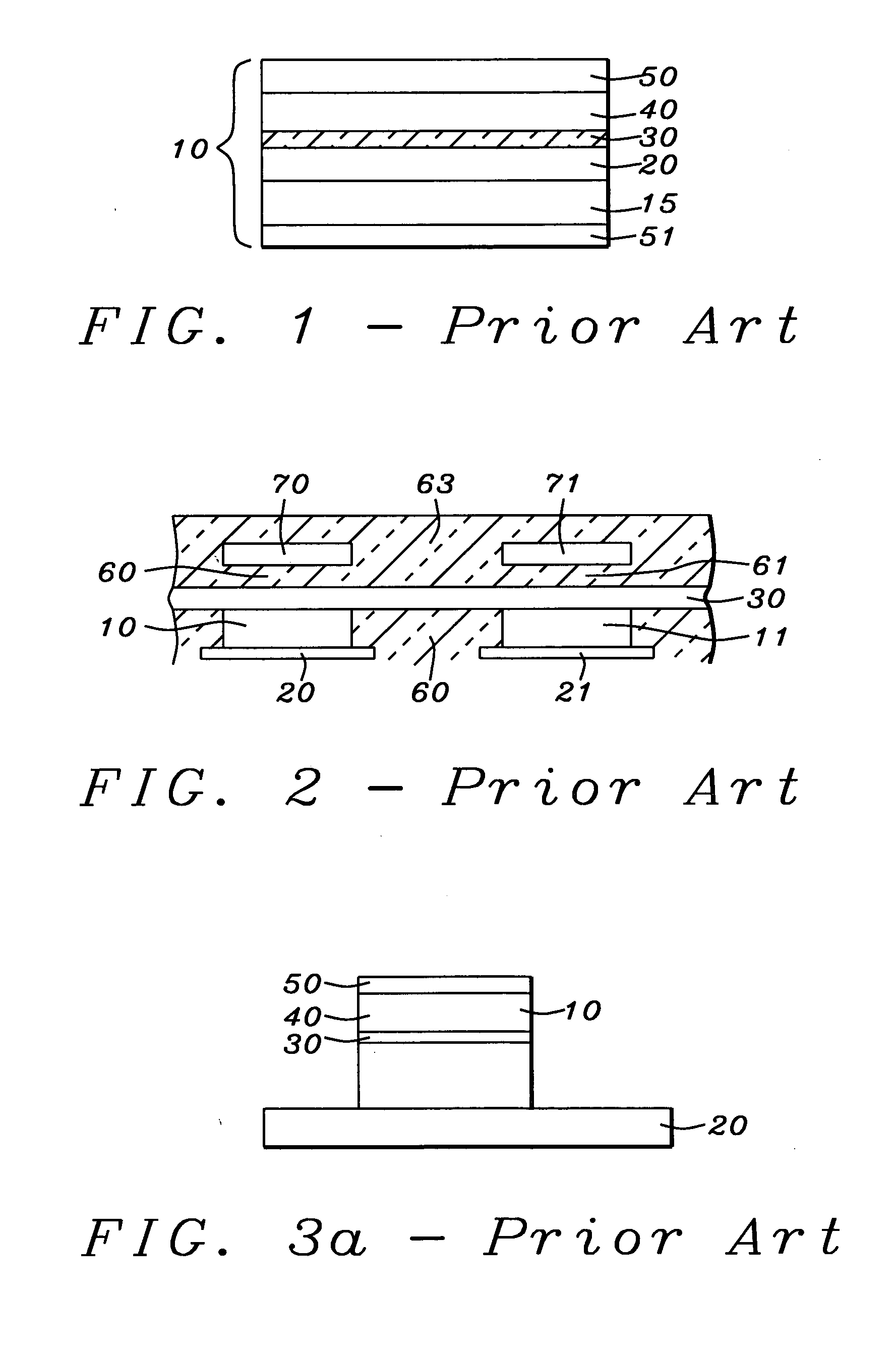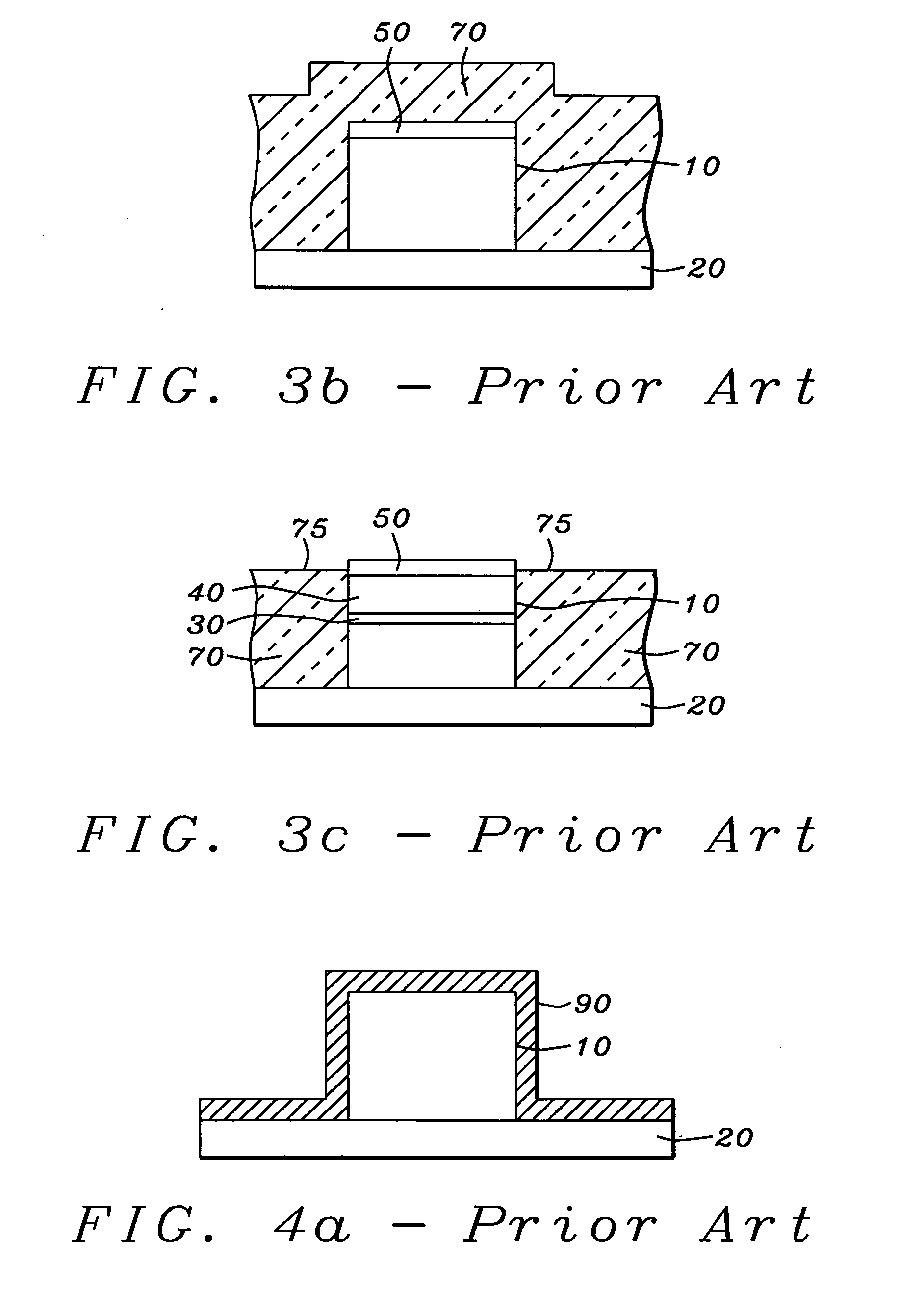Spacer structure in MRAM cell and method of its fabrication
a spacer and mram technology, applied in the direction of magnetic-field-controlled resistors, magnetic devices, electrical equipment, etc., can solve the problems of affecting the device performance, affecting the uniformity and co-planarity of prior art methods using cmp, and severely affecting the performance of the devi
- Summary
- Abstract
- Description
- Claims
- Application Information
AI Technical Summary
Benefits of technology
Problems solved by technology
Method used
Image
Examples
first preferred embodiment
[0045] Referring first to FIG. 6a, there is shown, for clarity, a single, typical, horizontally layered MTJ element (10) formed on a bottom electrode (20) and shown (for simplicity) patterned to a common final lateral width, W, of all its layers. It is to be noted that the element need not have all its layers patterned to a common width; for example, the free (40) and pinned (25) layers may have different widths. The element, which is identical to that shown in FIG. 1, includes a tunneling barrier layer (30), such as a layer of oxidized aluminum or magnesium, a magnetically free layer (40), such as a layer (or layers) of ferromagnetic material formed on the barrier layer and an uppermost capping layer (50), such as a layer of Ta, TaN, Ti, or TiN, formed on the free layer. While this MTJ element is found in the prior art, the method of the present invention, to be described with reference to the following figures, is not limited to an element of this particular composition, although ...
second preferred embodiment
[0053] The second preferred embodiment includes two versions, one of which is a continuation of the process steps already described and illustrated with respect to FIGS. 4a-4d of a prior art process and the other of which is a continuation of the process steps described and illustrated in FIGS. 5a-5e of a prior art process. In other words, the prior art process steps are carried out to a certain point and then the method of the second preferred embodiment replaces the remaining steps of the prior art process so as to achieve the objects of the present invention. The continuation of the process steps in accord with the second embodiment allows the formation of bit lines over the MTJ elements while not disturbing the lateral spacer layers already formed abutting the sides of the MTJ element. It is to be recalled that the prior art method leads to destruction of the spacer layers as a result of the formation of the Cu damascene bit lines.
Second Preferred Embodiment, First Version
[005...
PUM
 Login to View More
Login to View More Abstract
Description
Claims
Application Information
 Login to View More
Login to View More - R&D
- Intellectual Property
- Life Sciences
- Materials
- Tech Scout
- Unparalleled Data Quality
- Higher Quality Content
- 60% Fewer Hallucinations
Browse by: Latest US Patents, China's latest patents, Technical Efficacy Thesaurus, Application Domain, Technology Topic, Popular Technical Reports.
© 2025 PatSnap. All rights reserved.Legal|Privacy policy|Modern Slavery Act Transparency Statement|Sitemap|About US| Contact US: help@patsnap.com



